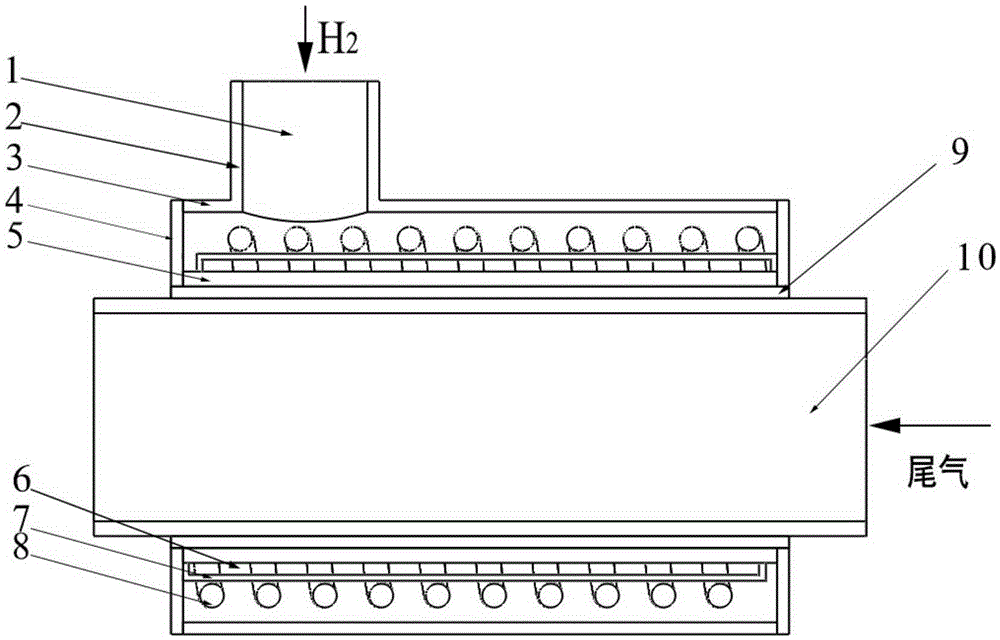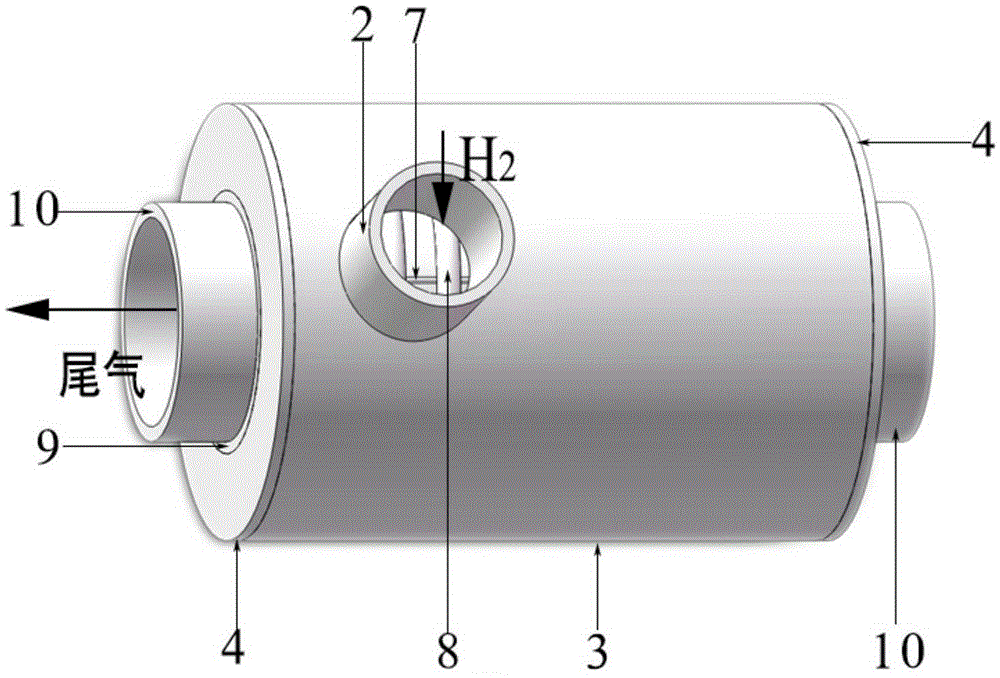A device for removing hydrogen in the interlayer of high-vacuum multi-layer heat-insulated tanks by using the waste heat of the tanker
A multi-layer heat insulation and high vacuum technology, applied in other chemical processes, chemical instruments and methods, etc., can solve the problems of reducing the heat insulation performance of the tank, increasing the hydrogen absorption capacity, and energy waste, so as to save time, manpower, and air absorption capacity Large, long-lasting effect
- Summary
- Abstract
- Description
- Claims
- Application Information
AI Technical Summary
Problems solved by technology
Method used
Image
Examples
Embodiment Construction
[0017] The present invention will be described in detail below in conjunction with specific embodiments. The following examples will help those skilled in the art to further understand the present invention, but do not limit the present invention in any form. It should be noted that those skilled in the art can make several modifications and improvements without departing from the concept of the present invention. These all belong to the protection scope of the present invention.
[0018] Such as figure 1 , figure 2 As shown, the present invention includes a sleeve adsorber 1 , a spring bracket 7 , a spring 8 , a heat-conducting silica gel 9 and an exhaust gas pipeline 10 . The casing adsorber 1 includes the casing adsorber inlet 2 , the casing adsorber outer tube 3 , the casing adsorber annular baffle 4 , and the casing adsorber inner tube 5 . The outer tube 3 of the sleeve adsorber and the inner tube 5 of the sleeve adsorber are two concentric metal circular tubes, both...
PUM
| Property | Measurement | Unit |
|---|---|---|
| length | aaaaa | aaaaa |
Abstract
Description
Claims
Application Information
 Login to View More
Login to View More - Generate Ideas
- Intellectual Property
- Life Sciences
- Materials
- Tech Scout
- Unparalleled Data Quality
- Higher Quality Content
- 60% Fewer Hallucinations
Browse by: Latest US Patents, China's latest patents, Technical Efficacy Thesaurus, Application Domain, Technology Topic, Popular Technical Reports.
© 2025 PatSnap. All rights reserved.Legal|Privacy policy|Modern Slavery Act Transparency Statement|Sitemap|About US| Contact US: help@patsnap.com


